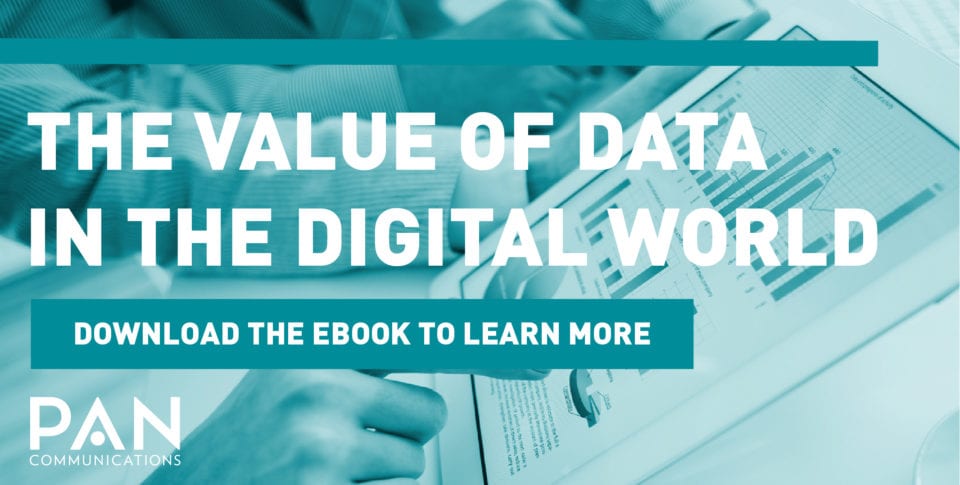There’s no doubt about it, the marketing industry has changed since we last gathered at INBOUND 2019.
Just one year ago, speakers were giving talks about company culture and the need to attract talent in a tight labor market. The role of marketing in supporting HR and recruitment efforts was at an all-time high, utilizing paid strategies to drive job applicants and engage with candidates.
Today, these themes are still relevant, but are cast in a much different light. Economic downturn driven by the spread of COVID-19 has caused unemployment rates to skyrocket and an abundance of talent to become available, but tight budgets and resource constraints are creating new challenges. Culture is still front and center, but the remote workforce has changed our approach to employee engagement entirely in this virtual world.

The Impact on Marketing
What this means for marketers is that we must become smarter and more efficient with our inbound marketing efforts. Learning how to tie your PR and inbound strategies closely together will be a must, as amplifying the right content, at the right time, across the right channels is more difficult now than ever before. Driving lead gen is also critical to proving (or not proving) ROI and will determine the fate of your budgets for 2021.
Crafting consistent and meaningful messages has never been more valuable. Customers and employees are demanding that brand communications are purpose-driven and that diversity, equity and inclusion (DEI) are top priorities at the leadership level. And neither are afraid to jump ship if they these communications come across as inauthentic.
How can you address these themes in your marketing strategy and put pen to paper as you plan for the upcoming year? Here are a few key takeaways from this year’s [virtual] event related to improving your PR and inbound marketing strategy.
Think Long-Term Rather than Just Short-Term
It’s easy to get caught up in short-term campaigns that will drive lead generation now. The pressure is on your team and agency partners to show quick ROI with short-term metrics. But don’t lose sight of the value of branding.
Although it might be harder to track in real time, deeper investment in developing a brand will have a bigger impact on your lead gen initiatives over time than lead gen initiatives by themselves in the moment.
In Ty Heath and Jon Lombardo’s, Global Leads for The B2B Institute at LinkedIn, session ‘B2B Trends for the Contrarian Marketer: Why to Bet Your Business on Marketing Trends that Don’t Change’, they cited that only 4% of B2B marketers are measuring beyond 6 months, and 95% of B2B campaigns are run on CPC.
But, over time, a stronger brand will improve activation performance, expand cash flow from future buyers and attract and retain the best talent.
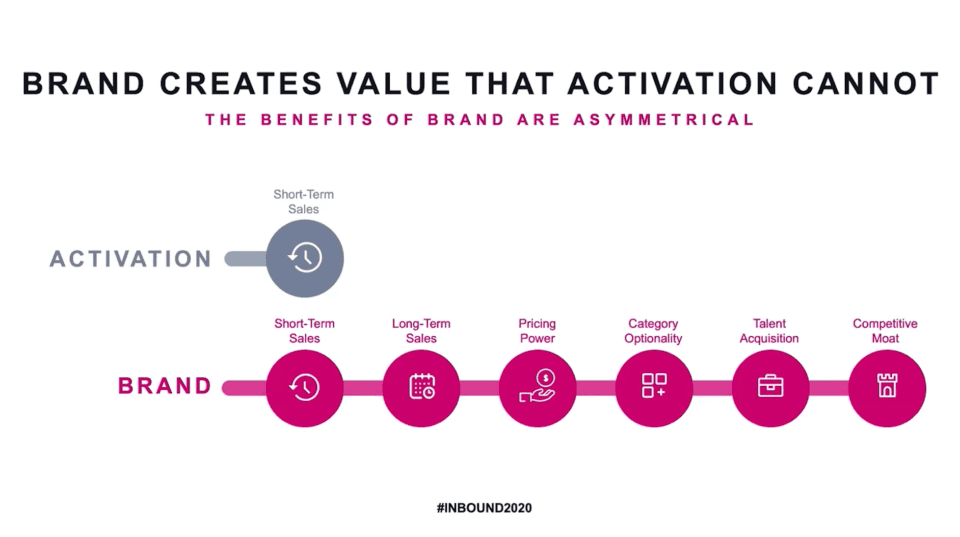
On the campaign level, think about the application of “blockbuster marketing” – take big bets by focusing on fewer things done better. Familiarity via prequels and sequels drives demand in the movie industry. Work with your agency to create campaigns that stay consistent year-over-year. Distribute the creative elements over multiple, different channels to target different audiences at different times. Creative distinctiveness is critical to building that long-term brand value.
Customer-Obsessed Content Is No Longer an Option
In Marcus Sheridan’s “The Definitive Guide to Content That Sells” session, he talks about his “They Ask, You Answer” mindset. His belief is that all content should address customer questions directly – especially when today’s customers have an abundance of challenges that need addressed due to the impacts of COVID-19.
Sheridan suggests that you hold yourself accountable for removing the “fluff” from your content program by asking yourself this question: How much of your content can be integrated into the sales process right now? If the answer isn’t the majority, then you have some work to do.
A Common Theme for Marketing & Sales: Trust
Lou Cimaglia, Senior Content Strategist at Liberty Mutual, talks about trust construction as part of the customer experience. Marketing’s role in the sales process goes through all three stages: attract, engage and delight. When evaluating your content program (more on that below), think about building trust by educating, advocating and reciprocating.
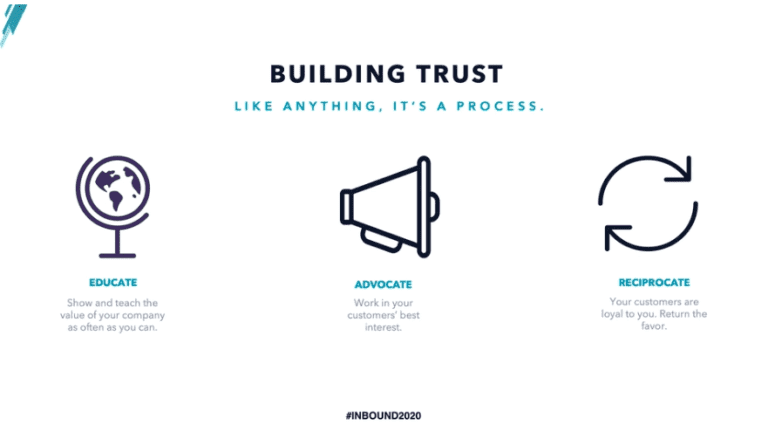
In simple terms: people do not want to feel dumb. Create content that helps your prospective and current customers make better decisions. Make hard things easy; think honestly about a customer’s best options; and you’ll never be the cheapest – so you might as well be the most thoughtful. Emotional connections are more important than ever, and if it hasn’t been on your mind already it should be now. In PAN’s 7th annual Content Fitness Report, the number of marketers emphasizing emotional connection in the second half of the year doubled from initial goals at the start of 2020.
Building out this strategy takes purpose and time. But remember those long-term brand value benefits. Need a place to start? Lean on your agency to help construct a content strategy that your current and prospective employees can get behind.
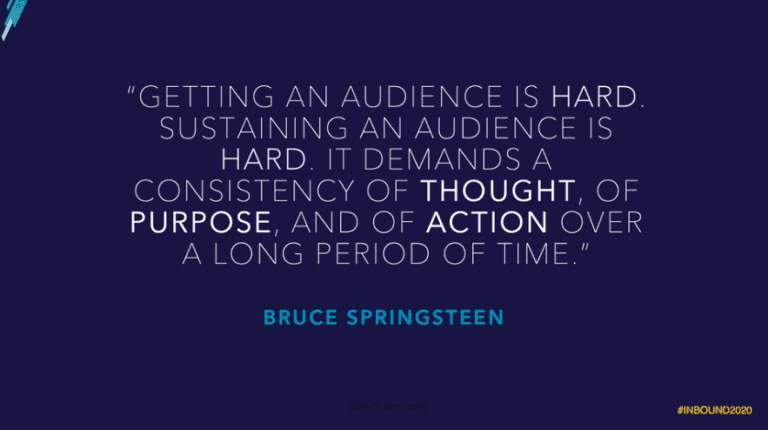
Your Customers Are (Still) Your Livelihood: Treat Them That Way
Echoing Sheridan’s customer-obsessed mindset, PAN’s Executive Vice President Mark Nardone gave a talk on “Managing the Empowered Customer: How to Build a Voice of the Customer Program.” In this session, Nardone explains that not every VoC program requires extensive budgets or teams, but that learning how to grow and scale your program as resources become available is critical.
Every brand is different, but Nardone suggests focusing your customer experience efforts on individual stages of the buyer’s journey that were hit hardest by the pandemic. If your most loyal customers were sustained, you may want to gear your CX initiatives to fueling the awareness and pre-purchase stages to better support your sales pipeline. Don’t be shell shocked by how massive a VoC program can be – start off small.
If you missed the session but want a roadmap to getting started, check out our guide to making customers the most valued asset of your marketing program.
Bridge the Gap Between Blog Traffic & Lead Generation
AJ Beltis, Marketing Manager, Content & Acquisition at HubSpot gave some how-to’s for this very topic. In this tactical session, Beltis discussed aligning traffic, content and lead gen goals to achieve a higher blog traffic to drive conversion rates using a pillar strategy and consistent analytics. His four-step process allows marketers to be better in sync with target audiences in terms of what they want to see, while in turn driving more lead gen for the brand.
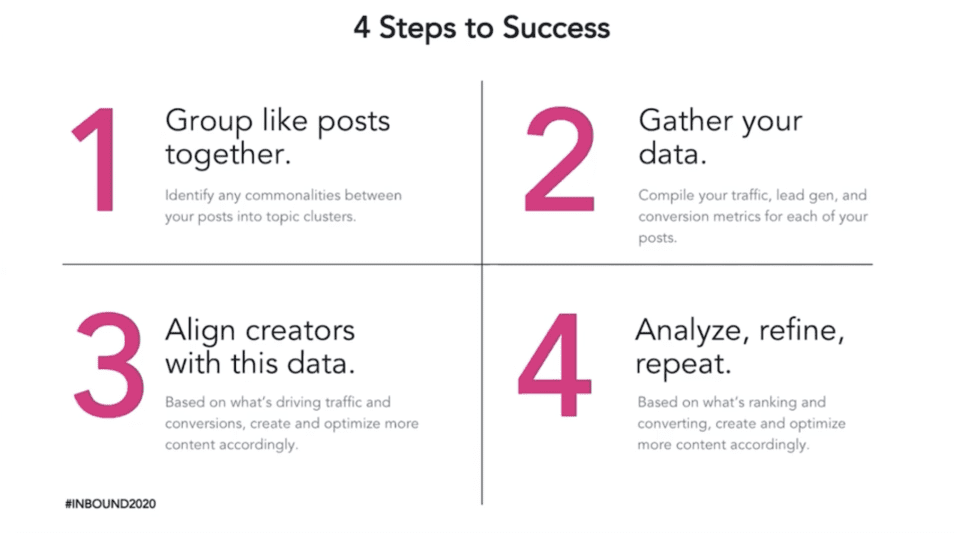
Bringing it back to Cimaglia’s session on trust on the integration across the customer experience – use Beltis’ approach to identify journey gaps across the three stages of attract, engage and delight. A combination of building trust and journey alignment will have lasting impact on your content strategy and your brand.
Overwhelmed by your content marketing strategy action items coming out of INBOUND or as you navigate the impacts of the pandemic? Use this content marketing framework to guide the integration of content across your demand gen activities.
Email Consumption Habits Are Changing, And So Should Your Strategy
Email is a touchpoint that every marketer should be using in some shape or form. Jay Schwedelson, CEO of Worldata, hosted a session called, “Critical Email Marketing Techniques to Crush the Competition.” He warned that email consumption habits have changed over the past few months and that marketers may be missing the opportunity to reach valuable customers.
Schwedelson goes on to share that the optimal days and times that both B2B and B2C buyers are active online have changed due to the remote workforce and encourages marketers to revisit their analytics more frequently. He also talked about the power of emotional marketing and incorporating words that truly connect with the buyer’s feelings in your subject lines. In fact, he cited research that says subject lines that recognize the current state of our world have an increased open rate close to 34% for B2B brands.
But remember, keeping authenticity at the core of your content will help you not only sell in the short term, it will help you build customer advocates and lasting relationships in the long term.
What Now?
This new world we’re living in isn’t going anywhere any time soon, so making necessary adjustments to the way we approach marketing and communications is imperative. As Ty Heath and Jon Lombardo cautioned in their session, set long term (realistic) goals for yourself and your team that you can work and show progress towards. This will ultimately allow you to better engage with customers and improve your inbound success over time.
As you look to up-level your inbound marketing strategy, take some time to assess your brand’s digital footprint with our Digital Visibility Audit.


